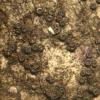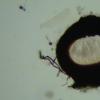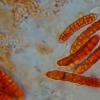
11-07-2012 21:45
Castillo Del Moral RanulfoI need information about this ascomycete, I do not

08-07-2012 22:55
 Edit Szilvásy
Edit Szilvásy
Dear forum, I want you to help me in defining the

08-07-2012 16:53
 Petersen Jens H.
Petersen Jens H.
Does anyone have a digital copy of:Scott A. Redhea

07-07-2012 14:51
Marja PennanenHi,I have found this big Hymenoscyphus ealier two

08-07-2012 09:27
 Petersen Jens H.
Petersen Jens H.
I found this wierd Mitrula-like fungus in an Alnus
I need information
Castillo Del Moral Ranulfo,
11-07-2012 21:45
Hans-Otto Baral,
11-07-2012 21:48

Re : I need information
where did it grow and in what region? Did you see the spores inside the asci?
Andrew N. Miller,
11-07-2012 21:51

Re : I need information





